For more than 12 centuries, people from all over the world have made the pilgrimage along the Camino de Santiago, destined to visit the Cathedral in Santiago de Compostela, where the body of St. James the Apostle is laid to rest.
How did the remains of James the Apostle end up in Northern Spain?
After the death of Jesus, his apostles scattered to different geographic regions, spreading the good news. James spent seven years roaming around Spain sharing the gospel. In the process, he wore out several pairs of 1st-century Birkenstocks, and had only a handful of converts and calloused feet to show for his efforts. In 44 AD, he tossed his hat in the ring and returned to Jerusalem to check how the other guys were doing.
It didn’t take long for James to lock horns with the Religious Old Guard in Jerusalem, who wanted nothing to do with him and his zeal for the new Christian faith. The Old Guard appealed to King Herod Agrippa for help.
Agrippa evaluated the situation: TICK OFF the Old Guard, or KNOCK OFF the Christian. Yup, you know what decision he made.
Agrippa gave the order and James was whacked with a sharp sword, his head rolled, and he was DEADER ‘N A DOORNAIL!
BIG MISTAKE, Agrippa! The sword was barely back in its sheath before Agrippa was consumed with agonizing pain from intestinal parasites. After five days of writhing in excruciating pain, King Herod Agrippa was also DEADER ‘N A DOORNAIL!
The sword-severed head of the Apostle James was buried under the altar of the Armenian Apostolic Cathedral in Jerusalem. Two of James’ best buddies stole his decapitated torso, placed it in a stone boat, and floated their cargo through the Mediterranean and up the coast of Spain to Iria Flavia, near Finisterre. The headless body was then sealed in a stone sarcophagus, hauled by oxen inland to an unmarked tomb, and left forgotten for several centuries.
In 813 CE, a hermit named Pelayo was minding his own recluse business when he noticed a brilliant shower of stars shining in the forest of Libredón. Intrigued, he followed the light and discovered a tomb in an old Roman burial ground.
Way to go, Pelayo! That discovery put you in the limelight and made you one of the most famous hermits in history!
Pelayo reported the strange event to the local bigwig, Bishop Teodomiro, who investigated and found a papyrus and an inscription on the crypt stating it belonged to James the Apostle (Specifically, “Jacobus, son of Zebedee and Salome.”)
Teodomiro reported the discovery to the top brass in all the land, Alphonso II, King of Asturias and Galicia. King Alfo dropped all his royal business, jumped on his trusty steed, and galloped to present-day Santiago de Compostela.
In 814 CE, Alphonso II, King of Asturias and Galicia, officially decreed the remains to be those of the Apostle St. James.
Alfo was the King, and if he said they found the remains of St. James, then so be it - his word was not to be questioned. Click here
Alfo immediately ordered the construction of a cathedral to house the sacred tomb and its contents. Word spread quickly about the miraculous discovery, and pilgrims began to converge upon Santiago de Compostela (literally: Saint James of the Field of Stars) to visit the tomb of St. James the Apostle. In the Middle Ages, 500,000 pilgrims a year visited the tomb of St. James the Apostle.
In modern times, one million pilgrims a year walk the Camino de Santiago to visit the tomb of St. James the Apostle in Santiago de Compostela.
One and another of a million…
Did I know its history before I decided to walk the Camino? Heck no! Like most pilgrims, I was intrigued by the idea of taking a LONG, quiet, inspirational hike through rural Spain. Hubs was inspired to tag along with me for a fun adventure.
After several days of walking through a quadrillion hamlets and villages with gazillion medieval stone buildings, I turned my focus to the local wildlife.
We chose to walk in the spring before the busy season, so we were often the only pilgrims on the Camino. As time passed, our senses became highly tuned and acutely sensitive to our surroundings. When a busload of people was dropped off to walk a kilometer along the Camino, the sound of their chatter and yakkety-yakking was so disruptive to our peace that we took a break and let the gaggle pass.
We plunked ourselves down in the middle of Mouse House Lane.
I noticed the earthen banks on the side of the road were pocked with all sorts of little holes. Not just a few holes - A LOT OF HOLES. “Hey, do you see all those little holes? What are they?” I asked Hubs.
“Ya, I see them. I think they’re mouse holes.”
“Really? So many of them? Look at them all. That’s a LOT of mouse houses.” It didn’t occur to me that I was likely SITTING on an ENTIRE CITY of mouse houses.
“Yup. I’m pretty sure those are mouse holes,” Hubs confirmed.
Numbed out from taking endless footsteps along the Camino, our brainwaves hovered between neutral and flatlining. We both ABSENTLY STARED at the curious holes burrowed into the ground.
“Look, there’s one that looks like a duplex. A mouse duplex.” I pointed to two holes in the ground. Of course, you had to be zoned out to see my mouse duplex.
Hubs nodded and said, “Uh huh. There’s one over there that looks like a fourplex.” He leaned across me and pointed to a group of four earthen holes - two on the bottom, two on the top.
Yup, he was right there with me in Camino Numb Brain Land.
We hummed and hawed, oooed and aahed, at all the configurations of mouse houses.
If anyone were listening, they would have sworn we were high as kites on something.
Exhaustion will do strange things to a person.
A few minutes later, we were walking through an area that looked like it had been harvested for timber at one time.
The forest was completely quiet and still. The ground beneath our feet was so soft that even our footsteps made no noise.
THE SOUND OF SILENCE.
The spell was broken by…
Cuckoo… Cuckoo… Cuckoo Cuckoo… Cuckoo… Cuckoo
We both burst into laughter.
Hubs said to the bird, “You’ve got that right! This IS CUCKOO!
Fortunately, it was one of our shorter days on the Camino. We arrived at our hotel by 3:30 PM, giving us time to nap before dinner. Trust me, we took full advantage of the opportunity to get some extra rest. Judging by our itinerary, the next day would be a REAL challenge.
Watch for the next episode of the Camino Series. The pilgrimage gets more challenging as the miles go on. Hubs and I run into a few bumps in the road, and we meet some interesting characters along the way!
Until next time, Buen Camino!


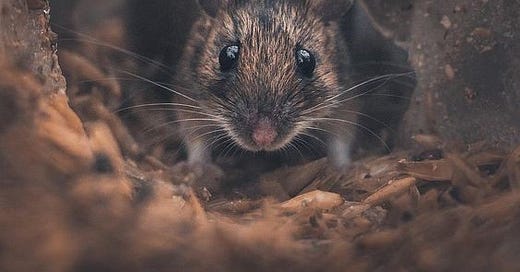

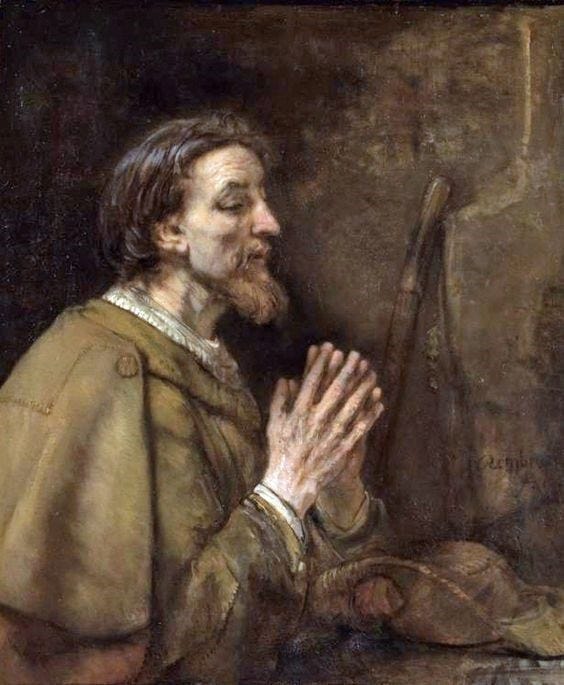
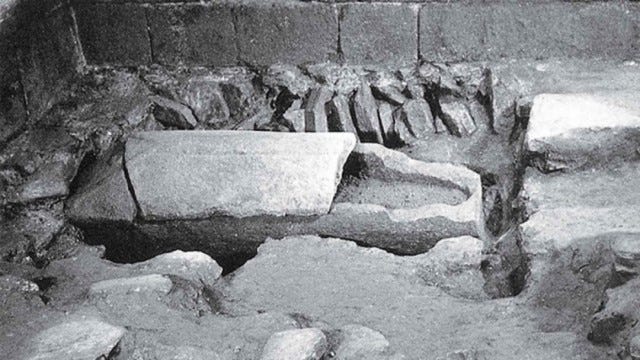


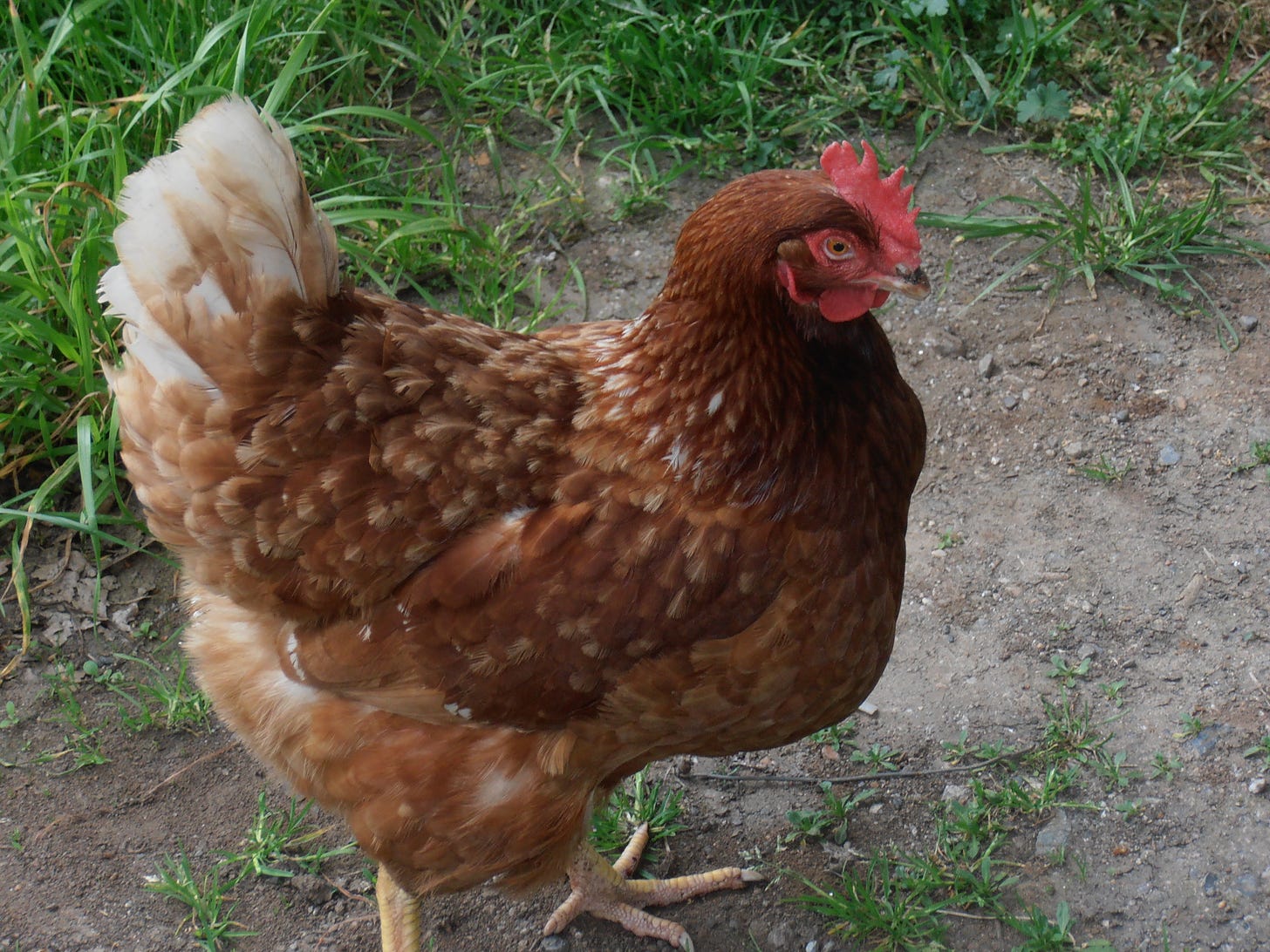
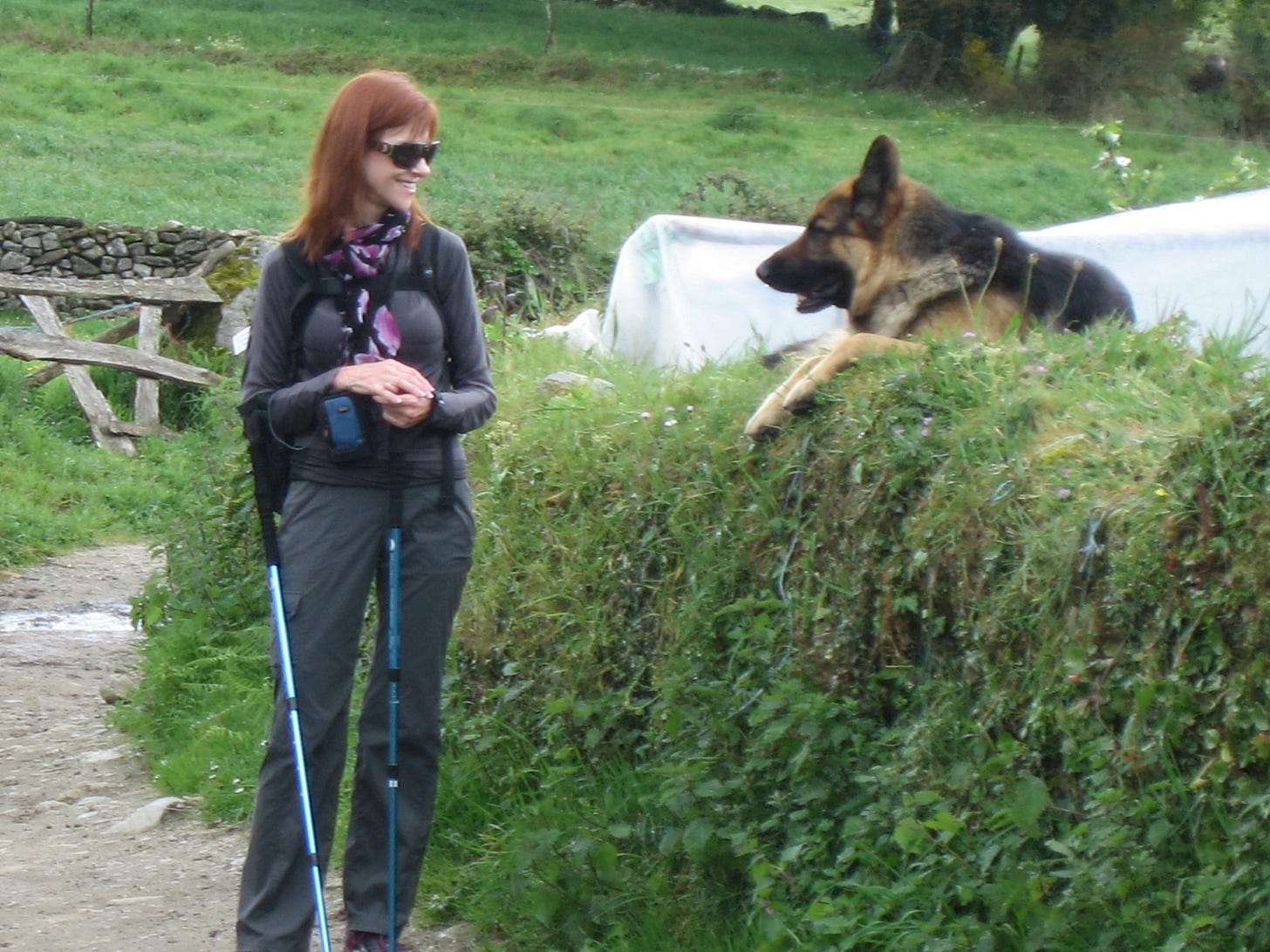
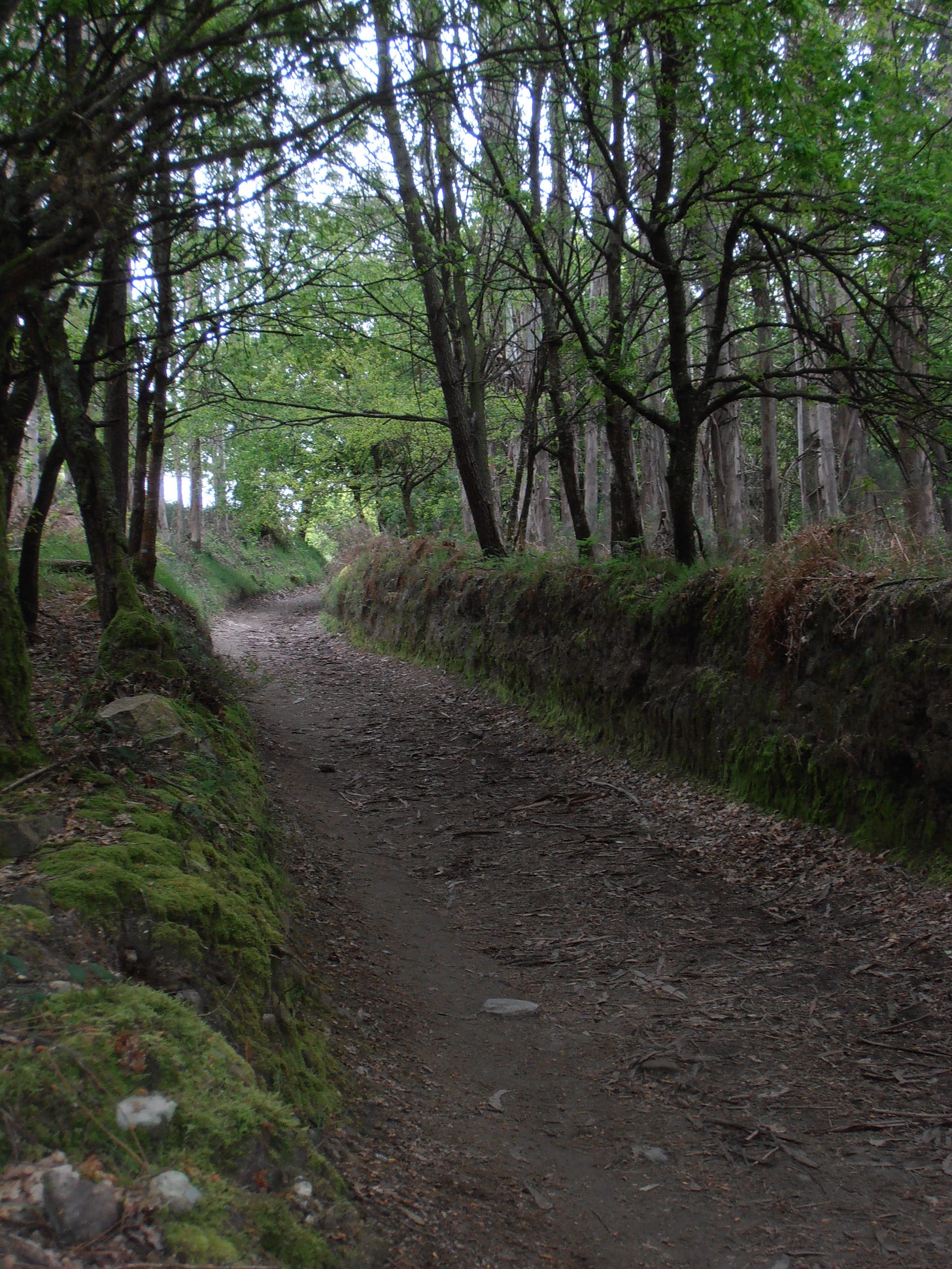



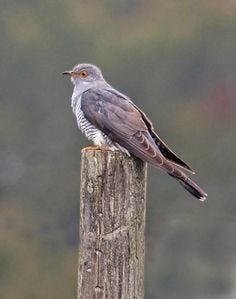
You're having fun, mouse holes in Cuckoo Land?
A truly fabulous adventure